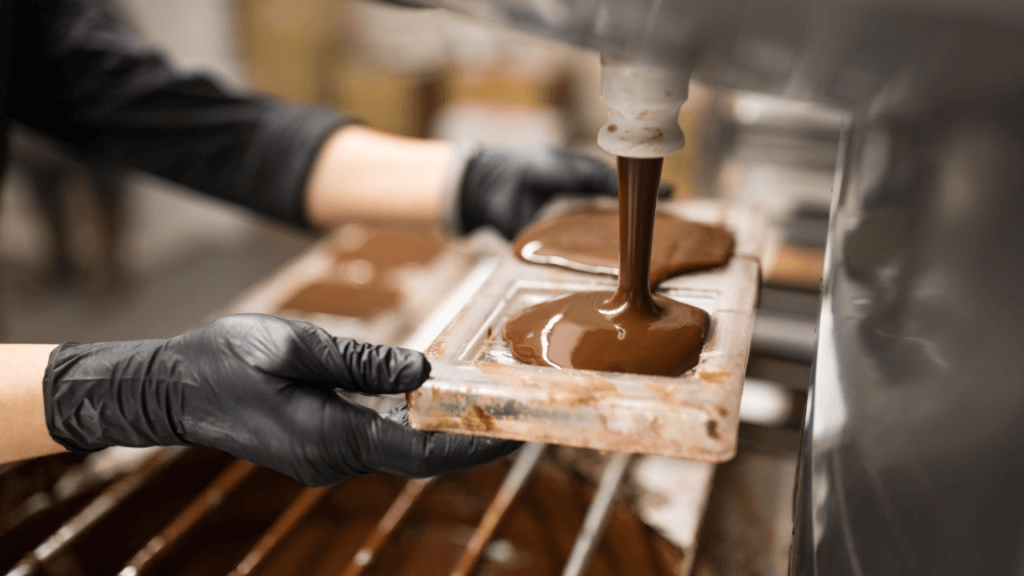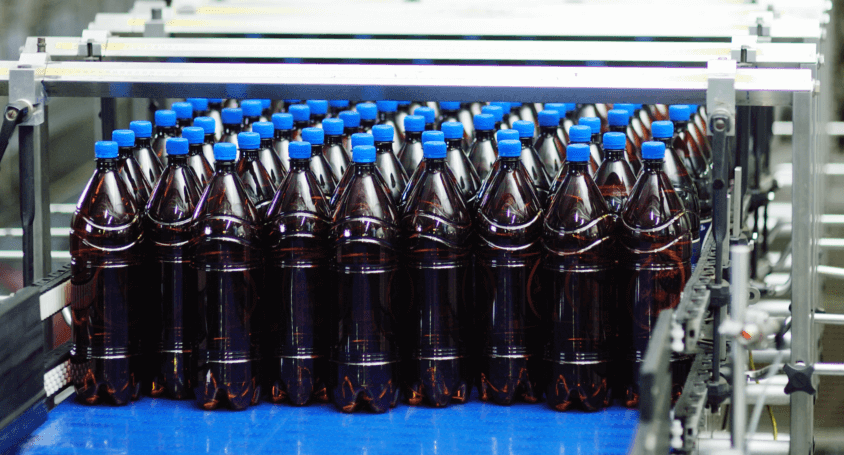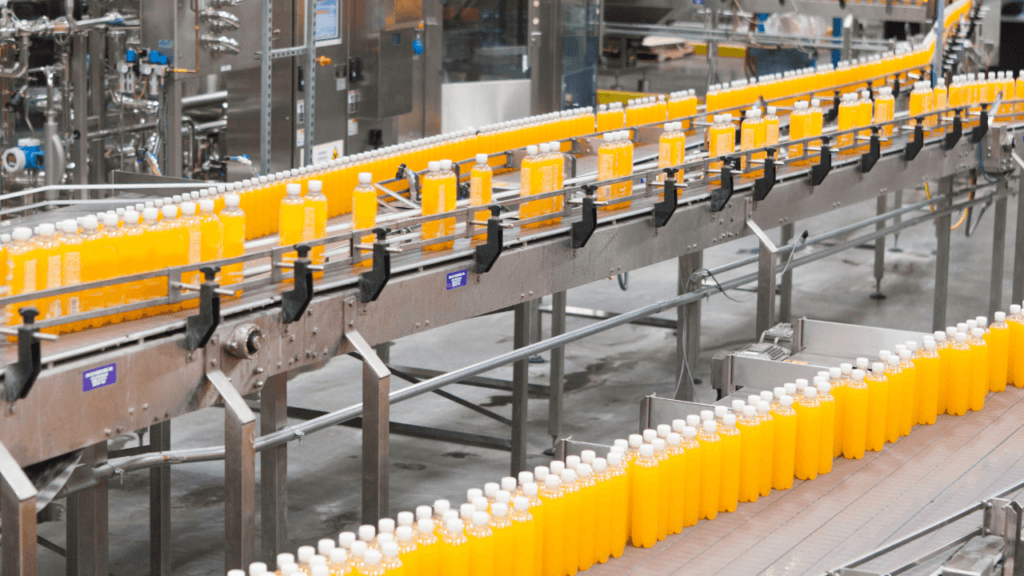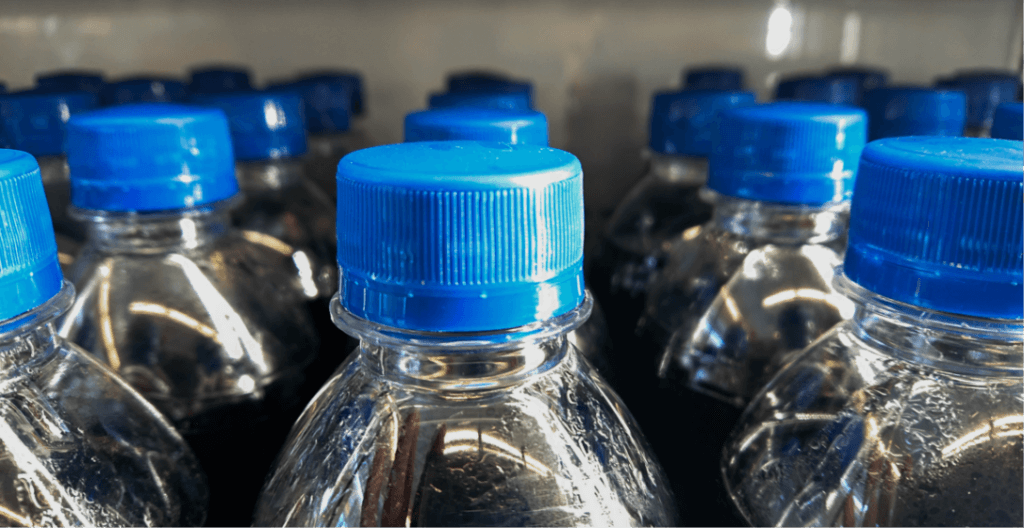At a Glance
A beverage bottling facility in Las Vegas, NV, was suffering from sulfide emissions in their wastewater collection system. Utilizing Aquacycl’s H2S removal system, SulfideFix, the facility was able to reduce energy consumption, avoid chemical addition, and reduce risk and odors
Reduction in H2S
Reduction in Energy Consumption
Less Sludge Removal
The Challenge
A beverage bottling facility in Las Vegas, NV, was suffering from sulfide emissions in their wastewater collection system. Sulfates are naturally occurring in city water sources and will concentrate in discharge streams from reverse osmosis systems that are used during bottling. When these concentrated sulfates mix with organic sugars in the wastewater, there is a natural and very rapid biological reaction that will convert dissolved sulfate into gaseous sulfide in wastewater collection and treatment systems.
Hydrogen sulfide (H₂S) commonly forms in wastewater as a function of biological activity, and can pose health and safety risks, as well as generate odors which frequently result in nuisance complaints and negative perception from the community. Additionally, H₂S can lead to corrosion and damage to infrastructure.
There are a variety of technologies and options for removing H₂S from wastewater, and the best approach will depend on factors such as the concentration of H₂S, the composition of the wastewater, and the regulatory requirements.
The Previous Situation
At the Nevada bottling facility, the wastewater was held in an underground basin prior to pH neutralization and discharge to the city. The formation of H2S in the basin resulted in odor complaints from staff and corrosion issues around the wastewater treatment facility and parts of the bottling plant that were near the wastewater system. There was an existing aeration system in the basin, which is a common method to help reduce sulfide formation; however, aerating the basin was generating a lot of biomass as sludge and the dissolved oxygen in the basin was still not high enough to reduce sulfide formation.
- Wastewater at the facility is held in a 75,000-gallon underground basin
- The formation of H2S was causing odor complaints and corrosion issues
- The aeration system in place was producing excess sludge and failed to reduce H2S to compliance levels
An Alternative Approach
Aquacycl was asked to demonstrate our SulfideFix product that utilizes Aquacycl’s patented Micro-aeration (MA) technology. SulfideFix applies a biological enrichment strategy to capture sulfide gas as it leaves the bulk wastewater and convert the gas into elemental biosulfur granules. The technology uses a floating manifold to distribute air across the liquid interface of the wastewater rather than diffusing air into and through the bulk of the wastewater. By aerating the surface of the liquid, the system requires a fraction of the energy to operate compared to other aerobic systems and creates a micro-environment that encourages the growth of sulfide oxidizing biofilms that oxidize the sulfide gas into a solid bio granule so sulfide never enters the headspace of the tank.
The solid sulfur is captured in the biomass and removed periodically as with tank sludge as a part of a service contract. The design of SulfideFix allows for variability in operating conditions, such as concentration of organics and changing tank volumes.
The system is designed to work with any existing tanks, with a modular design for easy installation and maintenance. SulfideFix equipment also comes with one year of free monitoring and maintenance services. Real-time, remote monitoring and control services can be renewed with an annual service contract as needed after the first year of operations.
Aquacycl’s SulfideFix has shown effective total sulfur removal across multiple applications, including brewery, beverage, and sewage applications.
Benefits
Consistent Performance Under Variable Conditions
Performance is maintained even with spikes of up to triple the organic load in COD and TSS
Reduced Operational Costs
With chemical-free operation, reduced energy consumption and reduced biomass production
Increased Equipment Lifetime
Eliminate corrosive H2S from systems reducing the corrosion of pumps and other equipment
Reduced Risk
24/7 data ensures H2S levels are maintained below regulatory limits for peace of mind
Putting the System to the Test
Aquacycl installed and operated a commercial SulfideFix system addressing sulfide emissions in a 75,000-gallon underground basin. The system includes the SulfideFix equipment, remote monitoring and control, real-time multi-parameter sensors and monthly physical samples and analysis as a part of the first year of operations. The installation into the basin was completed with zero hours of production downtime.
Hydrogen sulfide levels were monitored in both the gas and liquid phase in the tank, and with continuously monitoring air quality sensors. Chemical oxygen demand (COD), volatile organic carbon (VOC), and methane were also measured to monitor the impacts of reduced aeration in the basin wastewater.
Results
The system was able to quickly and effectively remove H2S, even under variable conditions. Within one month, the sulfide levels dropped from over 100 mg/L of hydrogen sulfide to less than .1, or a 99.9% reduction, and odor nuisance stopped almost immediately, within 48 hours.
Consistent performance even in variable conditions
The wastewater being treated had spikes in incoming Chemical Oxygen Demand (COD) and Total Suspended Solids (TSS), where some days organic load was triple. The high organic load creates the perfect condition for H2S formation, but the SulfideFix system was able to maintain KPIs even with this fluctuation.
Low biomass generated
With the previous aerobic solution, the client was removing sludge from their basin once per year due to the high aerobic activity and biomass generation. Sludge management was a costly process, which required up to four days of lost production. With SulfideFix installed, lower sludge volumes were produced, and timeframe for sludge removal was extended by 75%.
Reduced energy consumption
The system was able to reduce energy consumption by roughly 70% compared to the previous aerobic treatment. SulfideFix also performed well regardless of tank level, compared with additional energy required to maintain dissolved oxygen in the tank when more liquid was filling the volume. Volume in the tank varied greatly, and our system had the same effectiveness regardless of volume.
Reduced risk
By eliminating H2S formation, we were able to maintain safety standards in accordance to OSHA limits. Continuous monitoring with multi-input sensors, providing 24/7 data allowed the client to understand in real-time that H2S levels were below required limits, reducing risks of non-compliance, odor and safety.
Increased equipment life
The previous H2S buildup had been causing corrosive conditions that led to pumps and wiring re needing to be replaced prematurely. By eliminating H2S, Aquacycl’s SulfideFix could extend the life of pumps and other equipment.
The system was able to quickly and effectively remove H2S, even under variable conditions. Within one month, the sulfide levels dropped from over 100 mg/L of hydrogen sulfide to less than .1, or a 99.9% reduction, and odor nuisance stopped almost immediately, within 48 hours.
-
99.9% Reduction in H2S
-
70% Reduction in energy consumption
-
75% Increase in time between sludge removals
Conclusions
Advancements in wastewater treatment can help companies achieve both sustainability objectives and operational benefits. This case study helps to show how one bottling facility was able to reduce energy consumption, avoid chemical addition, and reduce risk and odors using Aquacycl’s SulfideFix.







